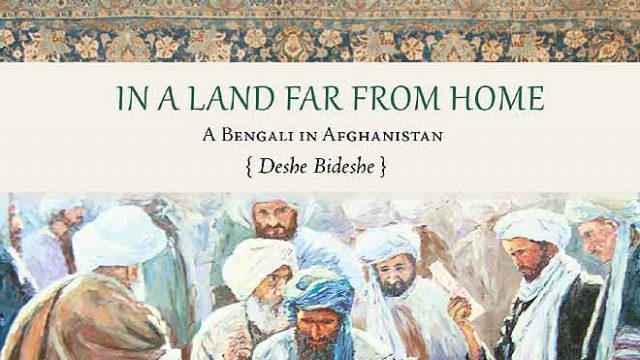Utter the word ‘Afghanistan’ and suicide bombers explode into view. I had a cousin posted there and the whole family was busy counting bomb attacks as the days ticked by. In opposition to this paranoia, it is refreshing to turn to Syed Mujtaba Ali’s account of his 1920s sojourn in Kabul and discover that the Pathans looked on Bengalis as the bombers and that the arrival of any Bengali, scholarly or otherwise, on the frontier had the British Government in emergency mode.
In this lively translation of Deshe Bideshe by Nazes Afroz, we discover a scholar who is very conscious of being both a Bengali and a travel writer. Fresh from Shantiniketan and Tagore’s teachings, Ali takes a teaching assignment in Kabul through the aegis of a Russian colleague from Viswabharati. The world he encountered was so laid back that it occasionally irritated him—as on his bus journey to Kabul, where the passengers got off the bus and went meandering off , delaying the journey by a whole night.
Ali juggles a deft mix of history and geography to explain why Afghanistan was the way it was, tracing various conquests and the accounts of travellers like Fa Hien and Hieun Tsang. It had always been a troubled zone and uneasy in its relations with the British Empire, though always closely linked to India, whether through the Urdu spoken by the Afghan mullahs or through the Gandhara School of Art.
Ali takes the reader wandering through the bazaars of Kabul, which he rates the best information hubs in the Empire. Hundis from Bengal were honoured in the Afghan capital, and what was whispered in Delhi’s corridors soon reached Kabul through an intricate spy system almost instantaneously. Ali does not tell us how this was possible, but he does paint an intriguing picture of a place where gossip was more important than trade—which is why Afghanistan was so integral to the Great Game of spy versus spy that the British played with the Russians.
Fresh from cosmopolitan Bengal and the second city of the British Empire, he was armed with the perfect combination of learning, wit and sophistication—and that emerges in the English translation through the use of phrases like ‘chef de cuisine’. In his year and a half, he rubbed shoulders with the colourful cast of characters that peopled Kabul —not to mention playing top bazi (tennis) with the Crown Prince Enayatullah. His cook was a 6ft 4 inch giant, had hands like bunches of plantains and reminded him of Bheem. And then there was the Russian Bolshov, who was one and a half times the size of his cook! Ali possessed a keen eye for detail, character and a tongue-in-cheek sense of humour that is very much in evidence throughout the book. Few would have compared the Pathan turban to the Bengali lungi in flexibility of use!
The writer revels in the landscape—snow spread like a grandmother’s tresses, the green ice-melt—though the road to the Khyber Pass has him feeling sorry for himself and for parched and tormented Mother Earth. And then violence explodes as the bandit Bacha e Saqao raids Kabul and drives out the whimsical Amir Amanullah, who had tried to force his tribal chiefs to abandon their shalwars for the English ‘dereshi’. The whirling snow is now blood-stained and Ali paints a grim picture of gradual starvation punctuated by sudden deaths and disappearances. His is the only eyewitness account of this period in Afghan history, and this adds to this charming book’s importance.




